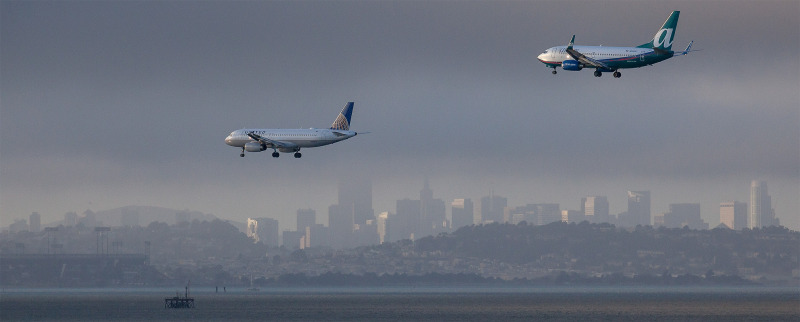It's been a particularly trying week for airline passengers flying to or departing from San Francisco International Airport, with long flight delays and scores of canceled flights.
The busy facility always faces challenges during summer fogs and winter storms. That's because the airport typically uses a pair of parallel runways to land planes. In clear weather, planes are allowed to land two at a time, virtually side by side; when visibility is impaired by low clouds or heavy rain, arriving flights can land just one at a time. That cuts the airport's capacity by half, and in really unfriendly weather, even more than that.
The reduction in capacity, in turn, prompts the Federal Aviation Administration to impose what it calls a ground-delay program.
Instead of allowing flights to just take off when there's bad weather at the destination, the FAA holds them at the departure airports. Then, the air-traffic control system performs what amounts to a massive rearrangement of flight schedules. Planes are assigned specific departure times and allowed to take off only as fast as the bad-weather airport can receive them. It's a form of metering that tries to prevent arriving jets from getting stacked up at their destinations and having to circle waiting for the chance to land.
The impact of all this plane-juggling on SFO this week has been dramatic.

